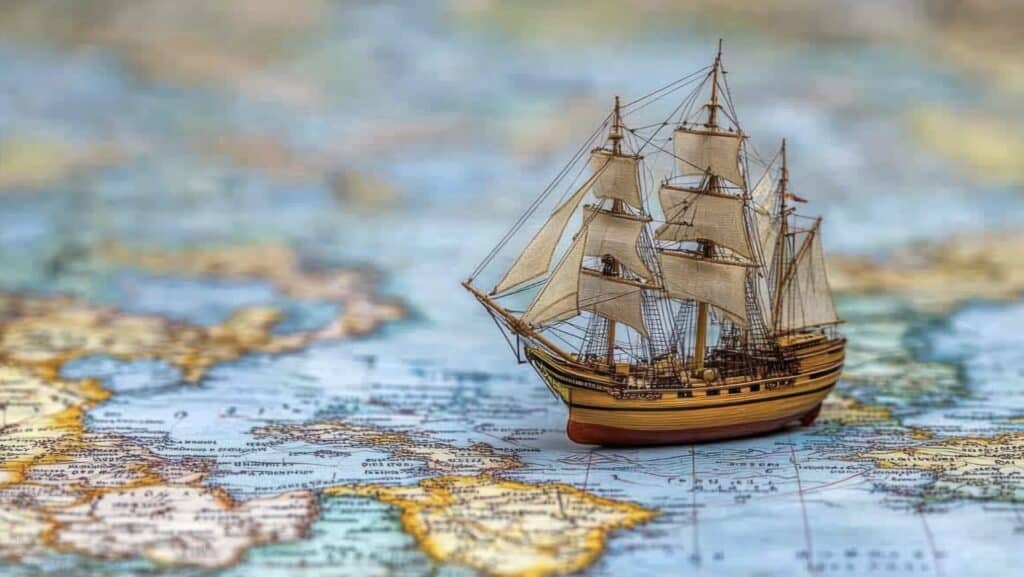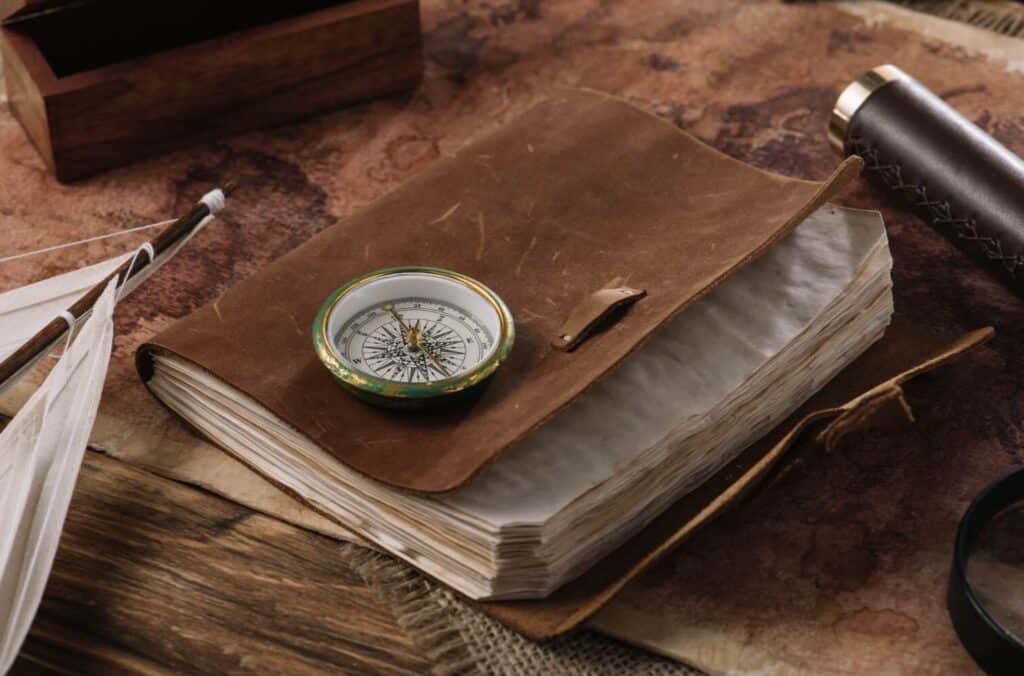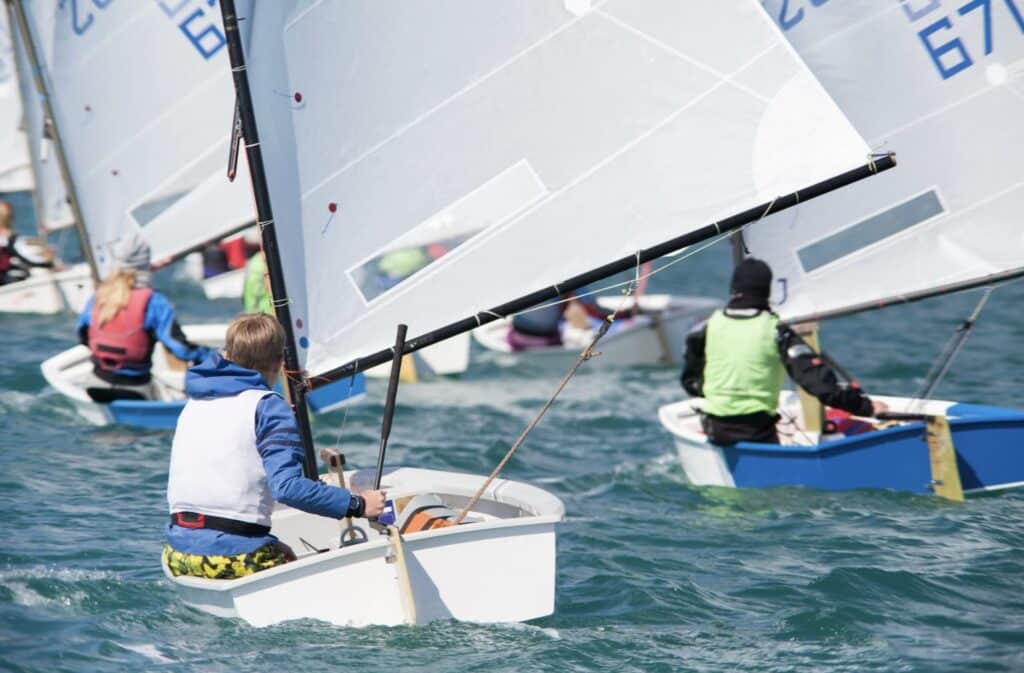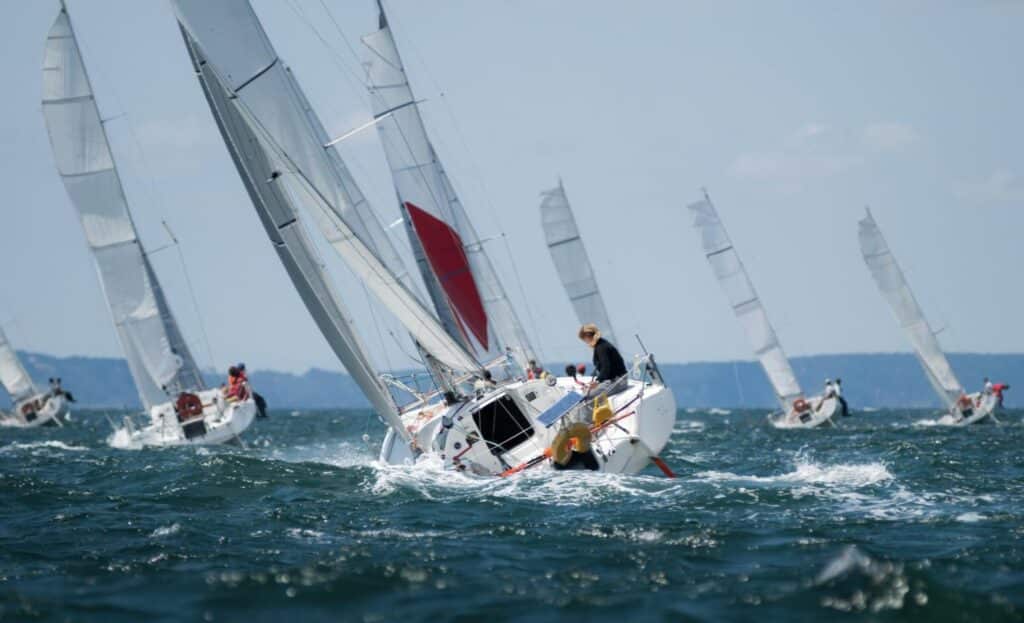Sailing, a timeless activity that combines adventure, skill, and innovation, has played a pivotal role in shaping human civilization. From the first rudimentary rafts to the sleek modern yachts that glide across oceans today, the history of sailing is a story of ingenuity, exploration, and commerce.
Sailing has connected continents, facilitated trade, and sparked cultural exchanges that have defined the course of human history. Read on as we will trace the fascinating journey of sailing, explore its transformative impact on global exploration and trade, and delve into its enduring appeal as a sport and recreational activity.
Table of Contents
- The Dawn of Sailing: Early Beginnings
- The Golden Age of Sailing: Trade and Empire
- The Industrial Revolution: Transitioning from Sails to Steam
- Modern Sailing: Innovation and Adventure
- Why Sailing Endures: The Timeless Appeal
- Related Questions
The Dawn of Sailing: Early Beginnings
The history of sailing begins thousands of years ago, with humanity’s earliest attempts to harness the power of wind to navigate waterways.
Archaeological evidence suggests that the first watercraft were simple rafts or dugout canoes, propelled by paddles or poles. However, the invention of sails marked a revolutionary leap in maritime technology.
The earliest sails were likely made from animal hides or woven reeds and were used to catch the wind, enabling early sailors to travel farther and faster than ever before.
The ancient Egyptians, around 3000 BCE, were among the first civilizations to use sails on the Nile River. Their boats, equipped with square sails, were primarily used for transporting goods and people along the river’s length.
These early vessels laid the foundation for the development of more sophisticated sailing technologies.

Sailing in Antiquity: The Mediterranean World
As civilizations flourished in the Mediterranean region, sailing became a cornerstone of trade and cultural exchange. The Phoenicians, a seafaring people from the eastern Mediterranean, were among the most skilled sailors of antiquity.
Around 1200 BCE, they developed advanced ships capable of navigating open seas. These vessels featured a combination of square sails and oars, allowing for greater control and speed.
The Phoenicians established trade routes that connected the Mediterranean to distant lands, including North Africa, Europe, and the Middle East.
They transported goods such as timber, ivory, and textiles, fostering economic growth and cultural interaction. Their maritime prowess also enabled them to explore uncharted territories, including the coasts of Spain and Portugal.
The Greeks and Romans further advanced sailing technology, using it to expand their empires and facilitate commerce.
Greek triremes, powered by rows of oarsmen and equipped with sails, were formidable warships that dominated naval battles. Meanwhile, Roman merchant ships carried goods such as grain, wine, and olive oil across the empire, ensuring the prosperity of Rome’s economy.
The Age of Exploration: Sailing Beyond Horizons
The Middle Ages saw the emergence of larger and more durable ships, paving the way for the Age of Exploration. During this period, sailing became synonymous with discovery, as European explorers ventured into unknown waters in search of new trade routes and territories.
One of the most significant innovations of this era was the development of the caravel, a Portuguese ship designed for long-distance voyages.
Caravels were equipped with triangular lateen sails, which allowed them to sail against the wind—a crucial advantage for navigating the open ocean. These ships played a central role in the expeditions of explorers such as Vasco da Gama, who reached India in 1498, and Christopher Columbus, who landed in the Americas in 1492.
The Age of Exploration ushered in a new era of globalization, as sailing enabled the exchange of goods, ideas, and cultures on an unprecedented scale.
European powers established colonies in Africa, Asia, and the Americas, creating vast trade networks that shaped the modern world. Spices, precious metals, and other commodities flowed across continents, fueling economic growth and cultural enrichment.
The Golden Age of Sailing: Trade and Empire
By the 17th and 18th centuries, sailing had reached its zenith as a tool for global trade and empire-building. The advent of larger and more sophisticated ships, such as galleons and frigates, allowed European powers to dominate the seas and establish lucrative trade routes.
The Dutch East India Company and the British East India Company were among the most influential maritime enterprises of this era. Their fleets transported goods such as tea, silk, and spices from Asia to Europe, generating immense wealth and fostering economic interdependence.
Sailing also played a key role in the transatlantic slave trade, a dark chapter in history that underscores the complex legacy of maritime commerce.
Naval warfare during this period further demonstrated the strategic importance of sailing. Battles such as the Spanish Armada in 1588 and the Battle of Trafalgar in 1805 showcased the power of well-equipped fleets in shaping geopolitical outcomes.

The Industrial Revolution: Transitioning from Sails to Steam
The Industrial Revolution of the 19th century marked a turning point in the history of sailing. The invention of steam engines led to the emergence of steamships, which gradually replaced sailing vessels as the primary mode of transportation on the seas.
Steamships were faster, more reliable, and less dependent on wind conditions, revolutionizing global trade and travel.
Despite this shift, sailing continued to be an important activity, particularly for recreation and sport. The 19th century saw the rise of yacht racing as a popular pastime among the wealthy elite. The establishment of prestigious events such as the America’s Cup in 1851 highlighted the enduring appeal of sailing as a competitive sport.
Modern Sailing: Innovation and Adventure
In the 20th century, sailing experienced a resurgence as a recreational activity and competitive sport. Advances in materials and design led to the development of lighter and faster boats, making sailing more accessible and enjoyable for enthusiasts.
The introduction of fiberglass hulls and synthetic sails revolutionized boat construction, while innovations such as GPS and electronic navigation systems enhanced safety and precision.
Sailing competitions, including the Olympics and the Volvo Ocean Race, attracted global audiences and showcased the skill and determination of sailors.
Sailing also became a symbol of adventure and freedom, as individuals and families embarked on voyages across oceans and explored remote destinations. The popularity of cruising and chartering reflected the growing demand for unique and immersive travel experiences.
Sailing Today: A Sport and Lifestyle
Today, sailing continues to captivate people worldwide. Whether as a competitive sport, a leisurely pastime, or a way of life, sailing offers a unique blend of challenge and relaxation.
Modern sailors embrace the thrill of navigating unpredictable waters, the camaraderie of working as a team, and the satisfaction of mastering complex skills.
Sailing also fosters a deep connection with nature, as participants experience the beauty of the ocean and the power of the wind firsthand.
Environmental awareness has become an integral part of the sailing community, with efforts to promote sustainable practices and protect marine ecosystems.

Why Sailing Endures: The Timeless Appeal
The enduring appeal of sailing lies in its ability to combine tradition and innovation, adventure and tranquility.
Sailing offers a unique opportunity to disconnect from the demands of modern life and immerse oneself in the natural world. It challenges individuals to think strategically, adapt to changing conditions, and work collaboratively—skills that are as valuable on the water as they are in everyday life.
Moreover, sailing fosters a sense of community and shared purpose. Whether racing against competitors or cruising with friends, sailors form bonds that transcend cultural and geographical boundaries. The universal language of the sea unites people from diverse backgrounds, creating a global network of enthusiasts who celebrate the joys of sailing.

Sailing’s Legacy and Future
The history of sailing is a testament to humanity’s ingenuity, resilience, and thirst for exploration. From ancient rafts to modern yachts, sailing has shaped the course of civilizations, facilitated global trade, and inspired countless adventures.
Its legacy is evident in the cultural, economic, and technological achievements that define our world.
As we look to the future, sailing continues to evolve, embracing new technologies and sustainable practices while preserving its timeless traditions. Whether as a sport, a hobby, or a way of life, sailing remains a powerful force that connects us to the past, the present, and the possibilities of the open sea.
At A Bus On A Dusty Road, we discuss history, travel, life, sailing, and ex-pat living. We are all about “Living Life As A Global Citizen.” We explore social, cultural, and economic issues and travel.
We would love to have you be part of our community. Sign up for our newsletter to keep up-to-date by clicking here. If you have any questions, you can contact me, Anita, by clicking here.
Listen to our Podcast called Dusty Roads. You can find it on all major podcast platforms. Try out listening to one of our podcasts by clicking here.
Subscribe to our A Bus On A Dusty Road YouTube Channel filled with great videos and information.
Related Questions
Differences Between Hanoi And Saigon? 9 Differences Explored
Hanoi and Saigon may be in Vietnam, but they also differ in the food and language of both cities’ daily lives. The weather and climate between both Hanoi and Saigon are also different. Hanoi is in the northern part of Vietnam, and Saigon is in the southern region. Through all my years of living and working in Vietnam, here are some differences I have seen between life in Hanoi and life in Saigon, Vietnam.
You can discover more by reading Differences Between Hanoi And Saigon? 9 Differences Explored by clicking here.
Why Is Being An Expat So Hard? 7 Real-Life Examples
For the last 30 years, I have lived and worked in foreign countries such as Hong Kong, Thailand, China, and Vietnam. I have been an ex-pat or expatriate for my entire adult life and working career.
As an ex-pat, there are things you miss out on from your home country, family events, and other life-important events. As an ex-pat, sometimes you can feel like an outsider in your host country, and life can be lonely as you are away from family and friends.
You can learn more by reading Why Is Being An Expat So Hard? 7 Real-Life Examples by clicking here.
What Is The Future Of Social Media? Future Social Media Trend
Worldwide the usage of social media continues to rise. This upward trend shows that social media’s future is bright and social media is here to stay for a while. More people worldwide are starting to sign onto social media platforms such as Facebook, YouTube, WhatsApp, Facebook Messenger, and Instagram. Tiktok is also an essential app as more people spend more time on TikTok than any other platform.
By clicking here, you can discover What Is The Future Of Social Media? Future Social Media Trends 2023.

